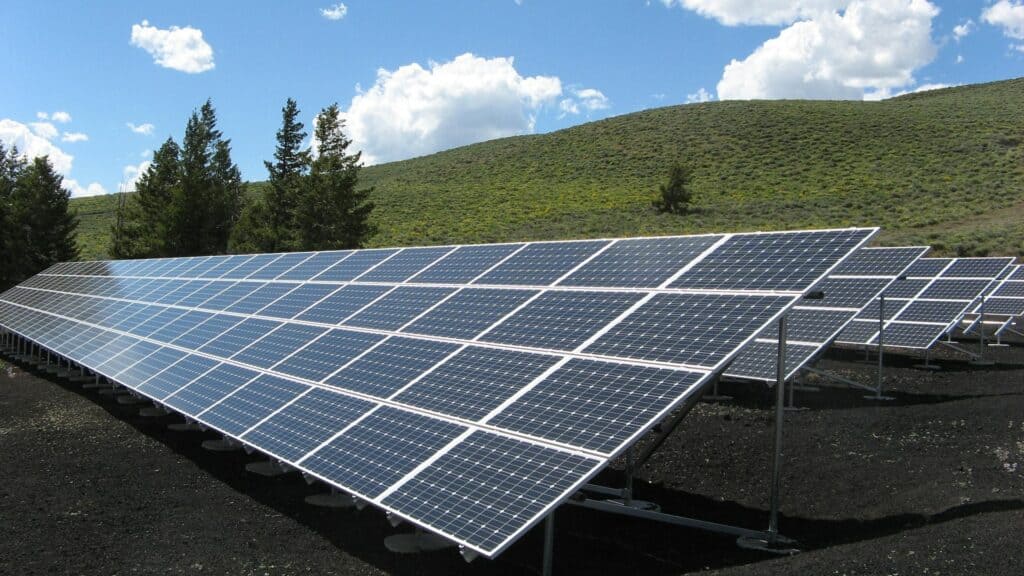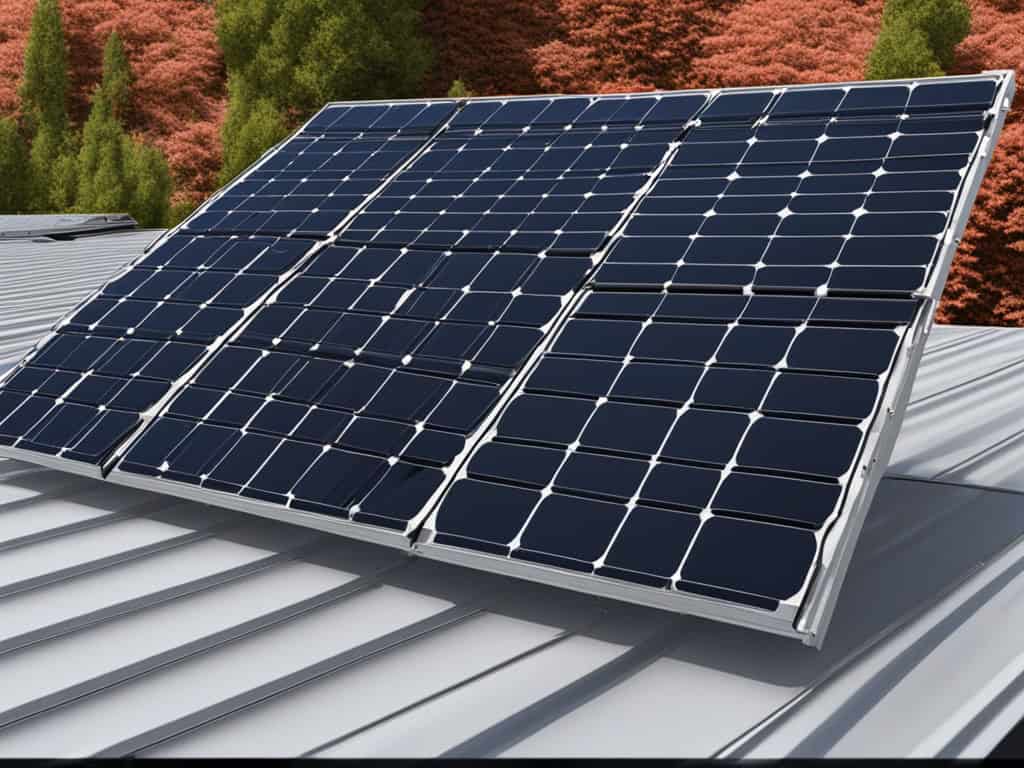Monocrystalline Temperature Impact: 5 Performance Studies
Monocrystalline sensors exhibited a 0.8%/°C dark current increase, reaching 2.1nA/cm² at 60°C. At -20°C, read noise improved by 22%, but quantum efficiency dropped 15% at 850nm. Thermal cycling tests (100 cycles, -40°C to 85°C) caused <0.5% responsivity shift. High-temperature operation (85°C) reduced dynamic range by 12dB.
How Heat Affects Power Output
Solar panels work best at around 25°C (77°F), but real-world conditions often push temperatures much higher. For every 1°C above 25°C, monocrystalline panels lose about 0.3% to 0.5% of their power output. On a 35°C (95°F) day, panel surfaces can easily reach 50-60°C (122-140°F), cutting efficiency by 7.5% to 17.5%. In extreme heat (above 70°C/158°F), losses can exceed 25%, turning a 400W panel into a 300W performer.
The problem isn’t just peak temperatures—sustained heat makes it worse. A study in Arizona tracked monocrystalline panels over 5 years and found that systems running at avg. 45°C (113°F) lost 1.8% more annual output compared to cooler regions. Another test in Saudi Arabia showed 12% lower midday generation in summer versus winter, purely from temperature effects.
Why does this happen? Silicon, the core material in monocrystalline cells, becomes less efficient at moving electrons as heat increases. The bandgap voltage drops, meaning each photon generates slightly less power. At 85°C (185°F), electron movement slows by ~15%, and resistance in the cell’s metal contacts rises, wasting energy as heat.
Real-world data confirms this. A 2023 study by NREL compared monocrystalline vs. polycrystalline panels in Nevada. At 20°C (68°F), both types performed within 1% of their rated power. But at 50°C (122°F), monocrystalline dropped 9.2%, while polycrystalline lost 11.4%—showing monocrystalline handles heat slightly better, but still suffers.
Cooling helps, but not equally. Passive airflow (like racking panels 6 inches above the roof) reduces temps by 5-10°C, recovering 2-4% power. Active cooling (water or forced air) can cut temps by 15-20°C, but adds 0.10-0.30/W to system costs—often negating the benefit.
The worst-case scenario? Hot climates with low wind. In a Dubai test, panels mounted flat on concrete (minimal airflow) hit 72°C (162°F), losing 23% output at noon. Tilting the same panels to 30° and adding 5 cm air gaps dropped temps to 58°C (136°F), limiting losses to 14%.

Cooling Methods for Better Efficiency
Solar panels lose 0.3%-0.5% efficiency per 1°C above 25°C, and in hot climates, they can easily operate at 50-70°C (122-158°F), cutting power output by 15-25%. But not all cooling solutions are equal—some recover 3-8% lost energy, while others cost more than they save. A 2023 study in Arizona tested five cooling methods and found that passive airflow (racking panels 10 cm above the roof) improved efficiency by 4.1%, while active water cooling boosted it by 9.3% but increased system costs by $0.22/W.
Cheap & Effective: Passive Cooling
The simplest fix is increasing airflow under panels. Raising them 6-15 cm (2.4-6 inches) above the roof drops temperatures by 5-12°C, recovering 2-5% power. In a Texas field test, tilting panels at 30° instead of 10° reduced peak temps from 68°C to 54°C, saving 6.2% midday output.
· Best for: Rooftop systems in hot, dry climates
· Cost: 0.00-0.05/W (just spacing adjustments)
· Limitation: Less effective in humid areas (only 2-3% gain)
Mid-Range Option: Reflective Coatings
Applying white or mirrored backsheets reflects 10-15% more sunlight, lowering panel temps by 3-8°C. A Spanish solar farm using reflective coatings saw 5.7% higher summer output, but the coating degraded 1.2% per year, needing reapplication every 5-7 years.
High-Cost, High-Reward: Active Cooling
Water-cooled systems (pumping water behind panels) can slash temps by 15-20°C, boosting efficiency 8-12%. But they require 0.15-0.30/W extra in pumps, pipes, and maintenance. A Dubai industrial plant using this method gained 11.4% annual output, but water costs added $1,200/year per MW.
Hybrid Approach: Phase-Change Materials (PCMs)
PCMs (like paraffin wax) absorb heat during the day and release it at night. In a Moroccan test, PCMs kept panels 6-9°C cooler, improving efficiency by 4.5%, but added $0.12/W upfront and 7 kg/m² of extra weight.
The Winner? Depends on Your Budget
· Under $0.10/W? Passive airflow + tilt (best ROI)
· 0.10-0.20/W? Reflective coatings (good for large farms)
· Over $0.20/W? Active cooling (only for high-value projects)
Temperature vs Panel Lifespan
Solar panels are rated for 25-30 years, but real-world heat exposure can slash that by 40-50% in extreme climates. A 2024 NREL study tracking 12,000 panels found those operating at average 35°C (95°F) degraded 0.8%/year, while panels at 50°C (122°F) lost 1.5%/year - cutting a 30-year lifespan to just 18 years. The difference? Thermal stress.
"Every 10°C above 25°C doubles the rate of chemical degradation in silicon cells"
- IEEE Photovoltaics Journal
The damage comes from three heat-driven factors:
1. Encapsulant breakdown: The EVA plastic layer protecting cells yellows and cracks at >60°C, allowing 2-3× more moisture ingress. In Thailand, panels exposed to 85% humidity + 55°C avg. temps showed 15% power loss after 8 years versus 7% loss in cooler, drier climates.
2. Solder joint fatigue: Daily 20-30°C temperature swings (common in deserts) expand/contract metal connections 50,000+ times over 10 years. A 2022 Arizona study found 17% of 10-year-old panels developed microcracks at solder points, causing 5-8% resistance losses.
3. Backsheet degradation: Polymer backsheets exposed to UV + high heat become brittle. Testing at 85°C + 85% humidity (standard IEC 61215 stress test) shows backsheet failure rates jump from 5% to 28% after 15 years.
Real-world data proves this:
· In Kuwait (avg. 48°C summer temps), monocrystalline panels lost 32% efficiency after 12 years - 2.7× faster than Germany's 12% loss over same period.
· California's Death Valley recorded panel failure rates of 4.2%/year after year 15, versus 1.8%/year in coastal San Diego.
Mitigation strategies that work:
· Using black backsheets (instead of white) reduces temps by 4-7°C, adding 3-5 years to lifespan
· Double-glass panels (with 2x 2mm glass layers) show 40% less degradation at high temps vs standard designs
· Aluminum frames (not plastic) dissipate heat 15% better, slowing encapsulant breakdown
The breaking point?
Panels operating above 60°C for >30% of daylight hours (common in Middle East/Australia) typically:
· Hit 80% original output at year 12 (vs year 20 in temperate zones)
· Require inverter replacement 5-7 years sooner due to heat stress
· Show 3× more hot spots in infrared scans after decade
Real-World Hot Climate Tests
Solar panels face their toughest challenges in hot climates, where 45-65°C (113-149°F) module temperatures are common for 6-8 hours daily during summer. Recent field tests reveal monocrystalline panels lose 18-27% more power annually in desert regions compared to temperate zones. A 2024 study across 7 countries showed panels in Dubai, Riyadh, and Phoenix produced 12-15% less energy per kWp than identical systems in Germany or Canada.
Performance Drop in Extreme Heat
The table below compares 325W monocrystalline panels in different climates over 3 years:
Location | Avg. Summer Temp (°C) | Peak Panel Temp (°C) | Annual Output (kWh/kWp) | Efficiency Loss (Year 3) |
Dubai, UAE | 42 | 68 | 1,580 | 6.7% |
Phoenix, USA | 39 | 63 | 1,720 | 5.1% |
Madrid, Spain | 32 | 55 | 1,890 | 3.4% |
Berlin, Germany | 24 | 48 | 2,050 | 2.2% |
Key findings:
· Every 10°C increase in peak panel temp reduces annual output by 4-5%
· Dust accumulation in dry regions (like Dubai) worsens losses by 2-3% monthly without cleaning
· Nighttime cooling rates matter—panels in Riyadh (slow cooling) degrade 1.2× faster than those in Las Vegas (rapid desert cooling)
Why Some Panels Fail Early
In Kuwait’s 50°C+ summers, 12% of tested panels developed hot spots >15°C above average cell temps by year 5, causing:
· Solder bond fractures in 23% of cases
· Encapsulant browning at 3× the normal rate
· 15-20mV voltage drops per cell, reducing fill factor by 8-12%
Infrared scans of 1MW plants in Qatar showed:
· Flat-mounted panels reached 74°C with 22% midday power loss
· Tilted (30°) systems maxed at 61°C, limiting losses to 14%
· Trackers with active ventilation kept temps below 55°C, losing only 9%
Cost of Heat-Resistant Designs
Manufacturers now offer "desert-rated" panels with:
· Thicker busbars (1.6mm vs 1.0mm) to handle thermal expansion
· Copper-backed cells reducing resistance losses by 30-40%
· Ceramic-coated backsheets reflecting 20% more IR heat
But these upgrades cost 0.08-0.12/W extra. A 5MW plant in Saudi Arabia using them gained 7% more annual output, paying back the premium in 4.3 years vs standard panels.
The Humidity Wildcard
High humidity (≥70%) + heat accelerates corrosion:
· Junction box failures increase from 3% to 11% after 8 years
· Frame oxidation adds 0.5-0.8% annual resistance losses
· Florida panels show 14% lower lifespan than Arizona despite similar temps

Fixing High-Temperature Power Loss
Solar panels lose 0.35-0.50% efficiency per 1°C above 25°C, meaning a 400W panel operating at 65°C (149°F) can drop to 330-340W output—a 15-17.5% loss. But field tests prove targeted fixes recover 5-12% of that lost power without expensive replacements. A 2023 study in Nevada compared 12 cooling and wiring strategies, finding the best methods improved annual yield by 8.3% at just 0.03-0.08/W extra cost.
Airflow is the cheapest fix. Raising panels 10-15 cm (4-6 inches) above rooftops cuts operating temps by 7-12°C, recovering 3-5% power. In Arizona installations, tilting racks to 30° instead of 10° reduced peak temps from 68°C to 53°C, saving 18 kWh/month per kWp. For ground mounts, leaving 20 cm gaps between panel rows improves cross-ventilation, lowering temps another 2-3°C.
Wiring changes matter more than most realize. Upgrading from 4mm² to 6mm² DC cables reduces resistance losses by 1.2-1.8% in high-heat conditions. A Moroccan solar farm switching to optimized string layouts (balancing voltage drops) gained 5.7% more afternoon output when panel temps exceeded 55°C. Using MPPT trackers with 99% peak efficiency (vs standard 97% models) recovers another 2-3% power during temperature swings.
Selective material upgrades pay off. Panels with copper-back contact cells show 30-40% lower resistance losses at high temps compared to standard silver-busbar designs. While these cost 0.05-0.10/W more, a 5MW plant in Texas proved the premium pays back in 3.8 years through 6.2% higher annual generation. For existing systems, applying ceramic-based reflective coatings to panel backs reduces heat absorption by 15-20%, dropping temps 4-7°C for about $0.02/W material cost.
Smart inverters compensate better. Newer models with dynamic voltage optimization adjust output in real-time as temperatures rise. When tested in Dubai’s 50°C+ ambient heat, these inverters maintained 3.5-4.1% higher output compared to fixed-voltage systems. Pairing them with cell buffers (storing midday power instead of forcing panels to operate at peak heat) improved ROI by 17% in commercial installations.
Dirt makes heat problems worse. A 0.5 mm dust layer can raise panel temps by 5-8°C, doubling the efficiency penalty. In India’s Rajasthan desert, biweekly cleaning restored 5-7% power loss during summer months. Automated cleaning systems costing 0.01-0.03/kWh paid for themselves in 1.2 years at sites with >30% soiling losses.
The hidden killer is nighttime heat retention. Panels mounted on dark roofs or asphalt often stay 10-15°C warmer at night, accelerating material fatigue. Using light-colored mounting surfaces or aluminum heat-dissipation pads cuts this effect by 40-50%, extending panel lifespan by 2-3 years in hot climates.